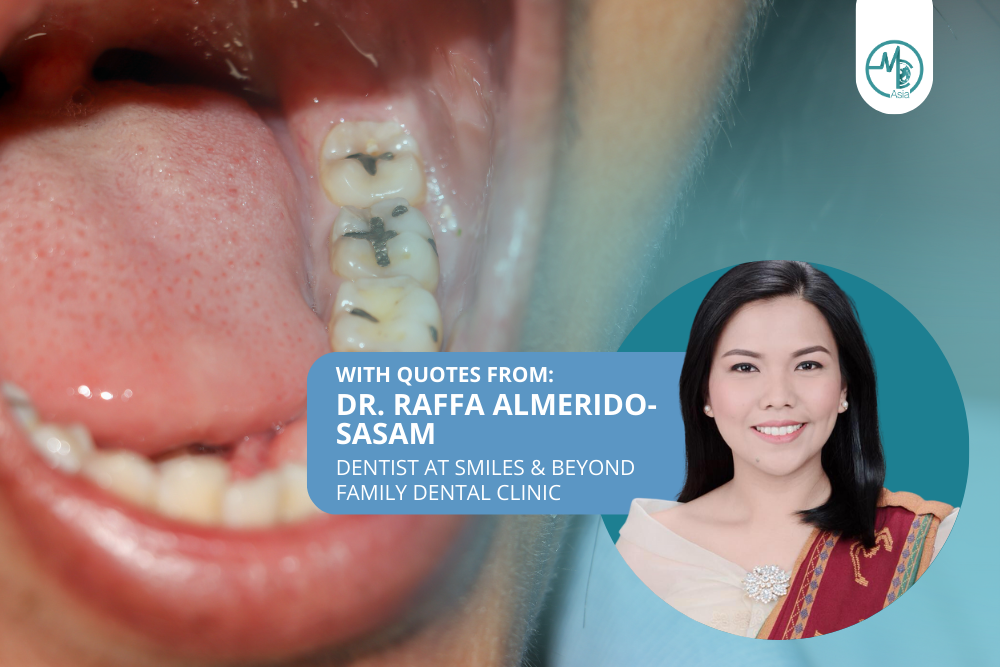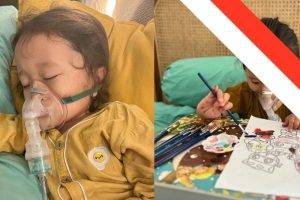The crisis of cavities among children in the Philippines has been increasing due to a lack of information and limited discussion about its prevention.
According to the Philippines’ Department of Health, 73% of Filipinos have a looming problem of tooth decay. Among the 73% affected, 83% are children between the ages of 5-12 years old.
What are Cavities?
Cavities, also called tooth decay or dental caries, are visible holes on the teeth which usually is marked by a dark color due to their decay. The decay is caused by the dental plaques that can corrode the teeth over time.
Dental plaques are the combination of bacterial acids, saliva, and food. The acid within the dental plaque is the primary cause of the corrosion of the enamel of the teeth.
Sugar is the main source of the bacteria, Streptococcus mutans (S. mutans), which to produces the bacterial acid. However, Iit is not the amount of sugar consumed but how frequently sugar is eaten.
Signs of Having Cavities
Cavities usually develop when brushing and flossing of teeth are not maintained due to the long exposure of teeth to dental plaques. The following symptoms can indicate the presence of cavities:
- Toothaches
- Tooth sensitivity (pain caused by cold or hot food/drinks)
- Visible holes in teeth
- Blackening or browning of tooth surface
- Pain while biting
- Bad breath
Impacts of Cavities on Children
Cavities not only affect children physically but it also affects the different aspects of their life. When left untreated, the pain can cause a disruption in the child’s daily activities such as sleeping and eating. It can also affect their attendance in school and their emotional well-being. That is why it is important to address cavities as early as possible.
Treatment and Prevention
It is not easy to know if a cavity is already forming which is why regular dental checkups should be done to monitor the health of the teeth. Prevention of cavities includes regular brushing and flossing of teeth (2x a day) 30 minutes after a meal, mouth washing, and regulation of sweets and carbonated drinks within your diet.
When toothaches or pain occur, scheduling a check-up with a dentist is a must. Treatment for cavities varies depending on the severity of the dental decay:
Early stages (no visible holes)
- Application of fluoride. Fluoride repairs and strengthens the tooth and protects the outer layer from acid erosion by preventing the formation of dental plaques.
Visible holes
- Filling of holes. The decayed part is removed and filled with a replacement. Tooth-colored composite or amalgam are used as a substitute.
- Artificial tooth crowns. The artificial tooth crowns that are made up of gold, porcelain, ceramic, or glass are affixed to the hole to cover it up.
Tooth Sensitivity (affected nerves and blood vessels)
- Treatment of root canal. The pulp is where the nerves and blood vessels of the tooth are located. Exposing the pulp causes sensitivity. Removing the sensitivity involves replacing the pulp with an artificial one called gutta-percha.
Fully Decayed Tooth
- Extraction of the tooth. Removing the entire tooth will further prevent the spreading of the decay. An artificial partial denture or tooth implant will replace the lost tooth.
Doctor’s advice
Dr. Raffa Almerido-Sasam, a general dentist at Smiles & Beyond Family Dental Clinic and an educator at a one of the universityies in the Philippines, shared her advice to prevent cavities in children. She states, “Preventing caries/cavity formation among children can’t be limited to simply brushing the teeth. We have to understand that dental caries among children starts even as early as 2 years old or worse, as the tooth erupts. Parents and guardians of these young individuals play a very crucial role in the prevention of tooth decay.”
She offered the following tips.gave notes saying “For me, the best prevention strategy starts at home:
- Parents and guardians must know how to properly perform thorough tooth brushing since children do not know how to brush their teeth on their own.
- Children having the correct diet and proper nutrition helps with the development of healthy teeth. We also know that tooth decay happens with the presence of bacteria, susceptible teeth, and food rich in starch/carbohydrates. Where else could these children get their proper nutrition but in their homes?
- Children should form good oral hygiene habits at home as they grow older. Brushing one’s teeth requires much motivation and a good attitude towards oral health. It is impossible to form these habits if they don’t do it routinely at home.
- The family should be present when the child is going to the dentist. If the child sees that the people in their homes give importance to oral health including regular visits to the dentist, this may result in them picking this up as a habit that could be passed through generations.”
Conclusion
The overlooked prevalence of cavities raises concern, causing multiple physical and emotional issues for children. Therefore, raising awareness and providing accessible services are crucial for early cavity prevention.
More Like This…
Teething Truths: Debunking Baby Teething Myths
Strong Teeth, Healthy Mind? The Surprising Link Between Oral Health and Brain Health












